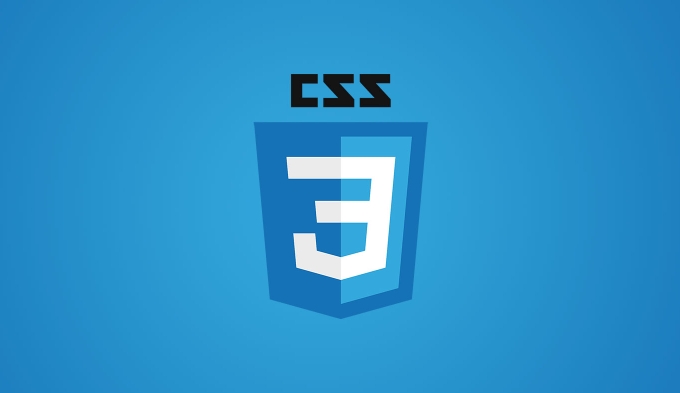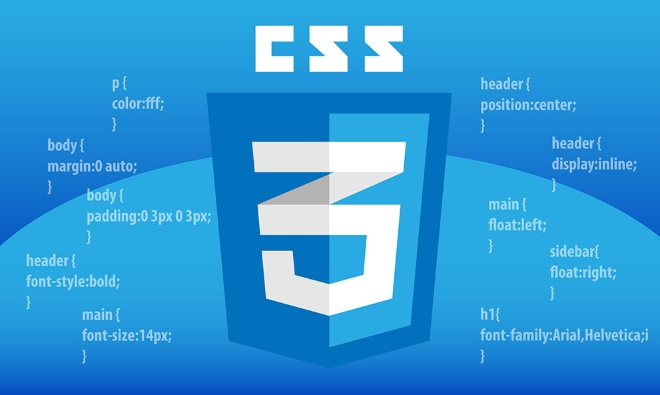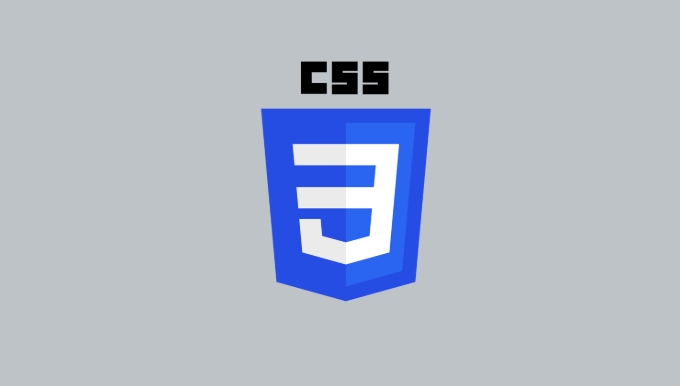Describe the `word-break` and `word-wrap` properties
Jul 16, 2025 am 02:08 AMWord-break and overflow-wrap (formerly word-wrap) do differently when dealing with long words or unbreakable content. 1. word-break controls how words in block elements break lines, break-all forces long words to break, keep-all avoids breaking, suitable for Chinese, Japanese and Korean texts. 2. overflow-wrap breaks long words when necessary to prevent overflow, break-word is smarter to judge the context. 3. In the usage scenario, use word-break: break-all for code, and use overflow-wrap: break-word for user comments. 4. Pay attention to differences in browser compatibility and different mobile behaviors. It is recommended to combine white-space or hyphens to improve readability.

When dealing with text layout in CSS, especially for long words or unbreakable content, word-break and word-wrap (now officially known as overflow-wrap ) are two properties that help control how text breaks within a container. They might seem similar at first glance, but they work a bit differently and are used in different scenarios.

What word-break Does
The word-break property controls how words break inside a block element when they reach the edge of the container.
-
normal– Uses the default behavior (breaks at allowed spaces). -
break-all– Allows breaking within words if needed to prevent overflow — useful for strings like URLs or code snippets. -
keep-all– Prevents breaking within words, often used for Chinese, Japanese, or Korean text where word boundaries aren't clear.
For example, if you have a long string like verylongwordwithoutspaces , setting word-break: break-all will force it to wrap into multiple lines even in the middle of the word.

This is especially handy when displaying user-generated content that may contain very long strings — without it, those strings could break your layout.
How word-wrap (or overflow-wrap ) Works
Although its name, word-wrap isn't really about wrapping words in general — it's more about handling overflow caused by long unbreakable words.

It has two main values:
-
normal– Only breaks at normal word break points. -
break-word– Allows breaking within a word to prevent overflow (similar toword-break: break-all, but a bit more context-aware).
You'll often see this used on elements like comments or chat bubbles, where users might type or paste something like an API key or a long email address that would otherwise cause layout issues.
Note:
word-wrapis now officially calledoverflow-wrap, though both names still work.
When to Use Which?
Choosing between them depends on what kind of content you're dealing with and how strict your layout needs are.
- Use
word-break: break-allif you want to aggressively break any long word regardless of language or context. - Use
overflow-wrap: break-wordif you want to be slightly more careful — it tries to keep whole words intact unless absolutely necessary.
Also consider combining them with white-space or using hyphens for better reading in some cases.
Here's a quick reference:
- For code blocks or logs →
word-break: break-all - For user comments or chats →
overflow-wrap: break-word - For better hyphenation (where supported) → add
hyphens: auto
A Few Things to Watch Out For
These properties don't always behave the same across all browsers, especially older ones.
- In some versions of Edge or Safari,
word-breakmight not work exactly like Chrome. - Hyphenation (
hyphens) works well in modern browsers but doesn't apply to all languages by default. - Mobile browsers sometimes handle word wrapping differently due to screen size and zooming behaviors.
If you're building a responsive site or app, test your text-breaking styles on different devices and viewport sizes to make sure nothing overflows unexpectedly.
Basically that's it.
The above is the detailed content of Describe the `word-break` and `word-wrap` properties. For more information, please follow other related articles on the PHP Chinese website!

Hot AI Tools

Undress AI Tool
Undress images for free

Undresser.AI Undress
AI-powered app for creating realistic nude photos

AI Clothes Remover
Online AI tool for removing clothes from photos.

Clothoff.io
AI clothes remover

Video Face Swap
Swap faces in any video effortlessly with our completely free AI face swap tool!

Hot Article

Hot Tools

Notepad++7.3.1
Easy-to-use and free code editor

SublimeText3 Chinese version
Chinese version, very easy to use

Zend Studio 13.0.1
Powerful PHP integrated development environment

Dreamweaver CS6
Visual web development tools

SublimeText3 Mac version
God-level code editing software (SublimeText3)

Hot Topics
 What is 'render-blocking CSS'?
Jun 24, 2025 am 12:42 AM
What is 'render-blocking CSS'?
Jun 24, 2025 am 12:42 AM
CSS blocks page rendering because browsers view inline and external CSS as key resources by default, especially with imported stylesheets, header large amounts of inline CSS, and unoptimized media query styles. 1. Extract critical CSS and embed it into HTML; 2. Delay loading non-critical CSS through JavaScript; 3. Use media attributes to optimize loading such as print styles; 4. Compress and merge CSS to reduce requests. It is recommended to use tools to extract key CSS, combine rel="preload" asynchronous loading, and use media delayed loading reasonably to avoid excessive splitting and complex script control.
 What is Autoprefixer and how does it work?
Jul 02, 2025 am 01:15 AM
What is Autoprefixer and how does it work?
Jul 02, 2025 am 01:15 AM
Autoprefixer is a tool that automatically adds vendor prefixes to CSS attributes based on the target browser scope. 1. It solves the problem of manually maintaining prefixes with errors; 2. Work through the PostCSS plug-in form, parse CSS, analyze attributes that need to be prefixed, and generate code according to configuration; 3. The usage steps include installing plug-ins, setting browserslist, and enabling them in the build process; 4. Notes include not manually adding prefixes, keeping configuration updates, prefixes not all attributes, and it is recommended to use them with the preprocessor.
 How can you animate an SVG with CSS?
Jun 30, 2025 am 02:06 AM
How can you animate an SVG with CSS?
Jun 30, 2025 am 02:06 AM
AnimatingSVGwithCSSispossibleusingkeyframesforbasicanimationsandtransitionsforinteractiveeffects.1.Use@keyframestodefineanimationstagesforpropertieslikescale,opacity,andcolor.2.ApplytheanimationtoSVGelementssuchas,,orviaCSSclasses.3.Forhoverorstate-b
 What is the conic-gradient() function?
Jul 01, 2025 am 01:16 AM
What is the conic-gradient() function?
Jul 01, 2025 am 01:16 AM
Theconic-gradient()functioninCSScreatescirculargradientsthatrotatecolorstopsaroundacentralpoint.1.Itisidealforpiecharts,progressindicators,colorwheels,anddecorativebackgrounds.2.Itworksbydefiningcolorstopsatspecificangles,optionallystartingfromadefin
 What is the scope of a CSS Custom Property?
Jun 25, 2025 am 12:16 AM
What is the scope of a CSS Custom Property?
Jun 25, 2025 am 12:16 AM
The scope of CSS custom properties depends on the context of their declaration, global variables are usually defined in :root, while local variables are defined within a specific selector for componentization and isolation of styles. For example, variables defined in the .card class are only available for elements that match the class and their children. Best practices include: 1. Use: root to define global variables such as topic color; 2. Define local variables inside the component to implement encapsulation; 3. Avoid repeatedly declaring the same variable; 4. Pay attention to the coverage problems that may be caused by selector specificity. Additionally, CSS variables are case sensitive and should be defined before use to avoid errors. If the variable is undefined or the reference fails, the fallback value or default value initial will be used. Debug can be done through the browser developer
 CSS tutorial focusing on mobile-first design
Jul 02, 2025 am 12:52 AM
CSS tutorial focusing on mobile-first design
Jul 02, 2025 am 12:52 AM
Mobile-firstCSSdesignrequiressettingtheviewportmetatag,usingrelativeunits,stylingfromsmallscreensup,optimizingtypographyandtouchtargets.First,addtocontrolscaling.Second,use%,em,orreminsteadofpixelsforflexiblelayouts.Third,writebasestylesformobile,the
 CSS tutorial for creating loading spinners and animations
Jul 07, 2025 am 12:07 AM
CSS tutorial for creating loading spinners and animations
Jul 07, 2025 am 12:07 AM
There are three ways to create a CSS loading rotator: 1. Use the basic rotator of borders to achieve simple animation through HTML and CSS; 2. Use a custom rotator of multiple points to achieve the jump effect through different delay times; 3. Add a rotator in the button and switch classes through JavaScript to display the loading status. Each approach emphasizes the importance of design details such as color, size, accessibility and performance optimization to enhance the user experience.
 What is the :target pseudo-class and how can it be used?
Jun 22, 2025 am 12:48 AM
What is the :target pseudo-class and how can it be used?
Jun 22, 2025 am 12:48 AM
CSS's :target pseudo-class is used to style the target element based on the URL fragment identifier. It works by the browser scrolling to the element when the URL contains a # symbol and element id and allows a specific style to be applied to the element via :target. Common use cases include highlighting the page section after navigation, creating tabs or slideshows without JavaScript, and improving accessibility to long pages. Usage tips include ensuring that id is unique, combining transition or animation effects, switching content visibility with display attributes, and considering compatibility with older browsers.






